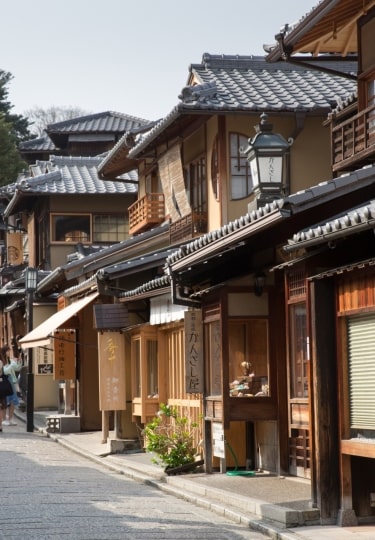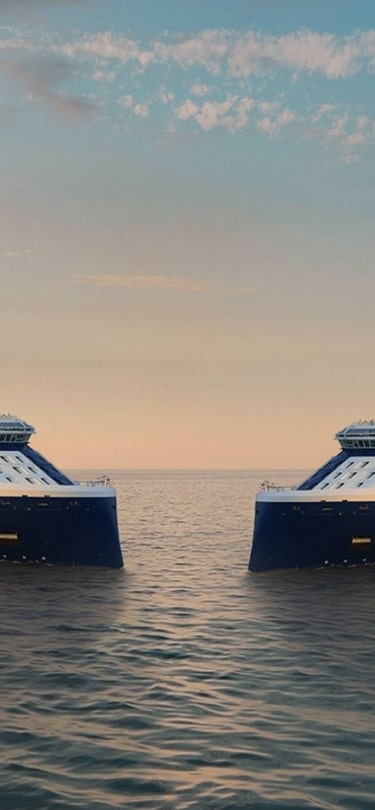The best time to visit Kyoto is in the spring months, when the city and surrounding countryside are swathed in the frothy pink of cherry blossom, or for the leaf-peeping season in fall, when the leaves on the maple trees turn fiery red. This is a city very much defined by nature, its beauty drawing crowds of domestic and international visitors.
Kyoto lies about 30 miles inland from the sea in the southern area of Honshu Island on a plain surrounded by low mountains. The climate here is humid temperate, which means cool to mild winters and hot, rainy summers. In fact, summers can feel tropical, thanks to the heat and humidity. Winters receive much less rainfall and are cool, although rarely snowy.
Whatever the weather, though, Kyoto draws visitors from all over the world for its natural beauty, year-round cultural calendar, and exquisite temples.
Visiting Kyoto By Season
Summer
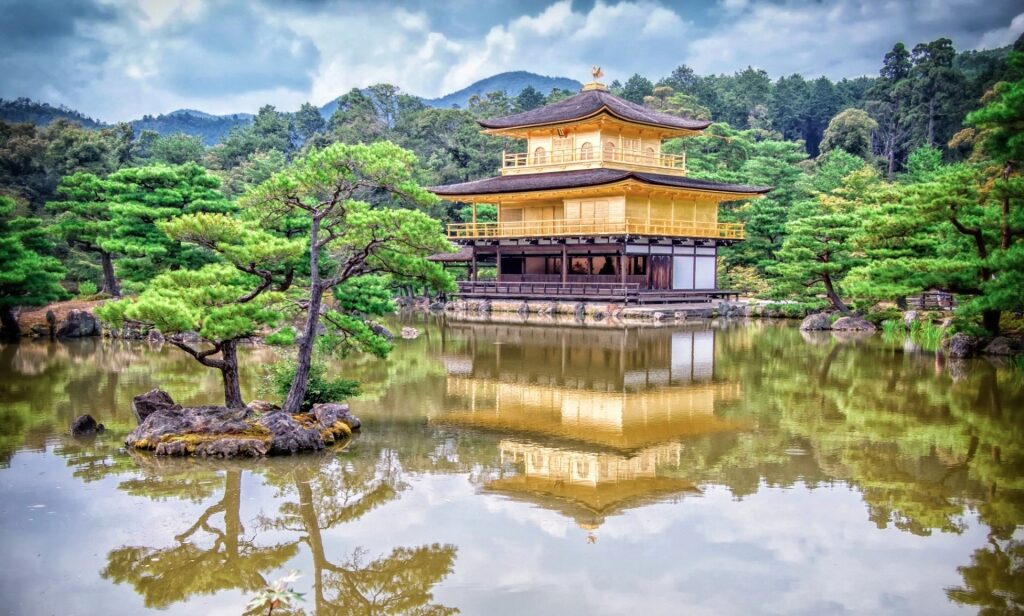
Kinkaku-ji
The summer monsoons mean that June, July, and August in Kyoto see a season of hot, humid weather. August is the hottest month in the city, with average daily highs of 84°F (29°C), while June and early July are the wettest, in a season known as Baiu. In July, expect an average of 8.8 inches (225mm) of rain, tailing off to 6.1 inches (155mm) by August.
Late summer ushers in a period of clearer skies; August receives on average six hours of sunshine daily, although the humidity can still be intense. But the lower rainfall means that August can be an excellent month to visit Kyoto.
Fall
While September can still be hot and humid, it’s still cooler than August. As fall progresses, October and November are both wonderful months to visit Kyoto. November is the best time to admire vibrant fall foliage. The maple trees here are particularly spectacular; the hunt for these, otherwise known as leaf-peeping, is known as momijigari.
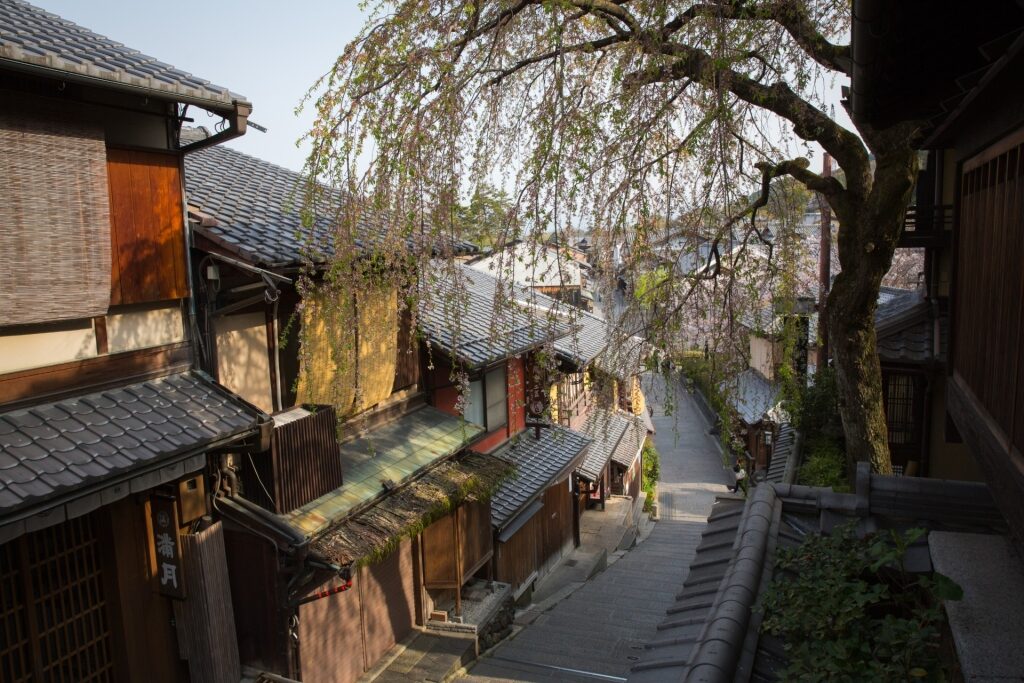
Sannenzaka
Fall foliage reaches its peak in November, which draws crowds to the city. In November, you can expect a daily average of 55.4°F (13°C), 2.95 inches (75mm) of rainfall, and around four and a half hours of sunshine daily.
Winter
December, January, and February are cool, dry months; December and January receive just 2.1 inches (55mm) of rain each, with average daily temperatures of 41°F (5°C) in January. Rain may fall as sleet or light snow, but big snowfalls are unusual.
If snow does fall, the temples blanketed in white make a spectacular vision. The mountains that fringe Kyoto’s plains may be capped in snow, too. And if it’s cold, you can still warm up in an onsen, or hot spring, which are open year-round.
Spring
March, April, and May, springtime, is arguably the best time to go to Kyoto because the whole city is a sea of pink cherry blossoms. Cherry trees usually start to flower in early April as the temperature is warming up, with an average of 59°F (15°C), rising to 68°F (20°C) in May. Visit Kyoto a little earlier and the plum trees will be in bloom before the sakura, or cherry blossom season begins.
Rainfall increases as spring progresses. This is another reason to visit in April, as it’s drier than May, receiving on average 4.52 inches (115mm) of precipitation as opposed to 5.9 inches (150mm) in May.
When Is Rainy Season?
The hot, humid rainy season in Kyoto is in June and July, which both receive an average of four and a half hours of sunshine daily. But it doesn’t rain the whole time. You can expect overcast skies, but this is still a good time to visit Kyoto. The city’s parks and manicured gardens are in bloom, while hydrangeas add rich clusters of color.
Rainy season is by no means the low season; the city will still be busy. Come prepared for showery weather, though, and for the heat. A portable fan is a good idea.
When Is High Season?
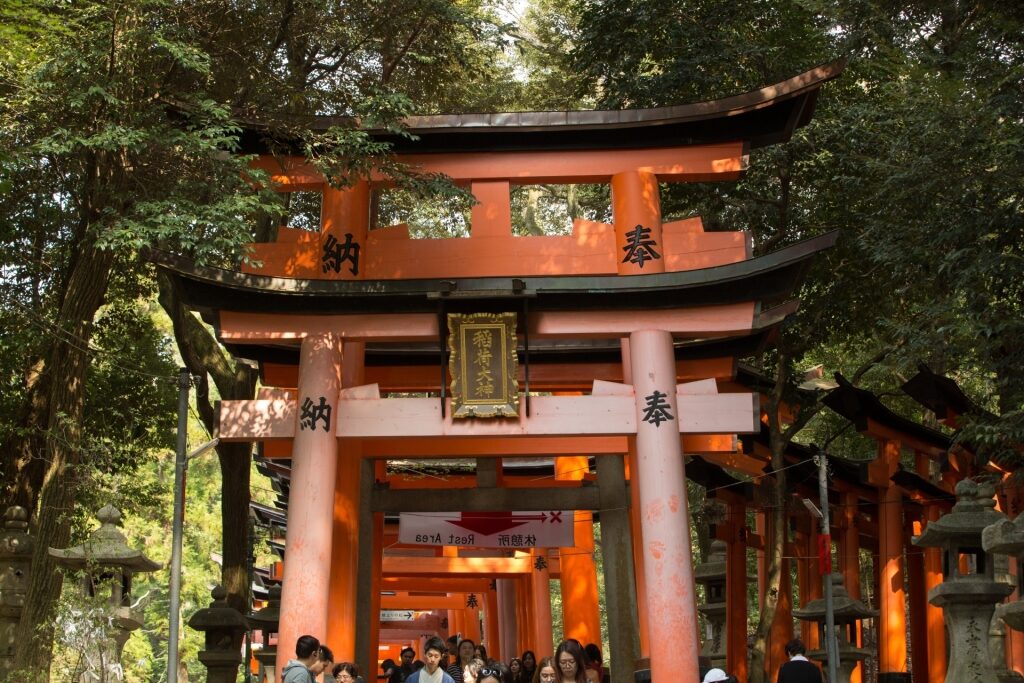
Fushimi Inari Taisha
High season in Kyoto is April and May for the cherry blossom and increasingly warm days, and November, for the cooler, drier weather and fall colors, or koyo.
The first week of May is Golden Week in Japan, when four national holidays fall within a week and a lot of Japanese take their vacation domestically. Kyoto, like anywhere else, will be busy. Travel after this time and you’ll still see some blossoms but have the advantage of warmer days and fewer crowds.
When Is Shoulder Season?
Shoulder season in Kyoto is the humid summer months. Despite the frequent downpours in June and the first half of July, this is a time of festivals and celebration; Kyoto’s colorful Gion Matsuri festival spans the whole month of July. The parks and gardens that Kyoto is famous for are lush, while rain-slicked temples are especially beautiful to photograph.
There is a mini-peak in tourism in August, too, for the moveable Obon holiday, which honors the spirits of ancestors and spans three days mid-month.
When Is Low Season?
Low season in Kyoto is the cold winter months, December, January, and February. Late December sees a peak in activity for the Omisoka year-end celebrations, but this is a time for domestic tourism and family, and many shops and restaurants will actually shut down.
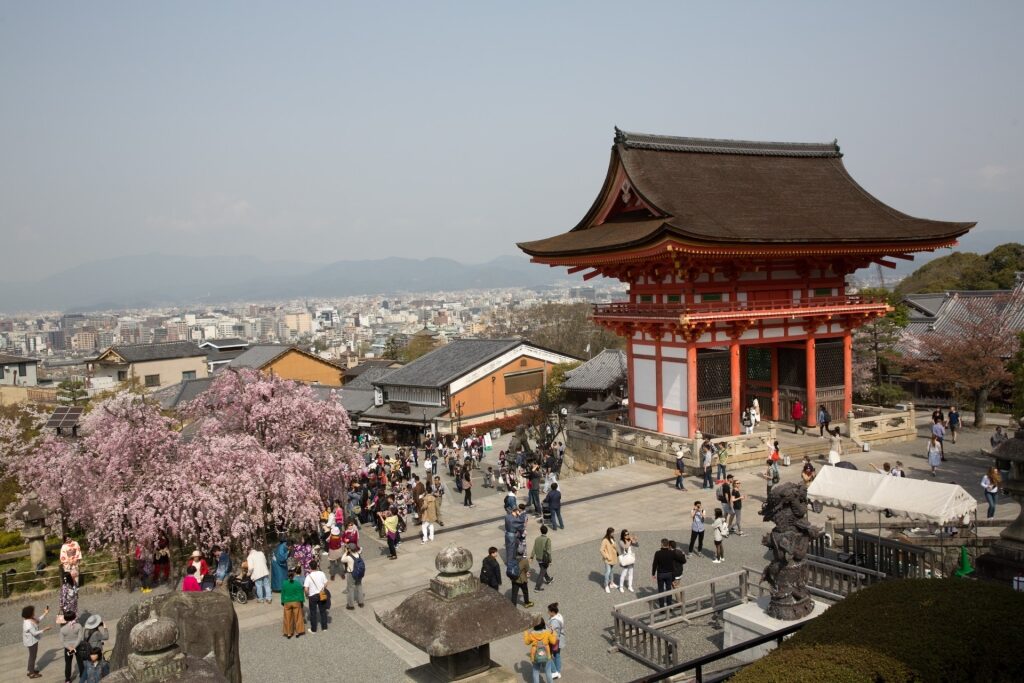
Kyoto
Discover Kyoto’s beauty for yourself on one of Celebrity’s cruises to Japan. Browse our cruises to Kyoto and plan your adventure to this fascinating city.
